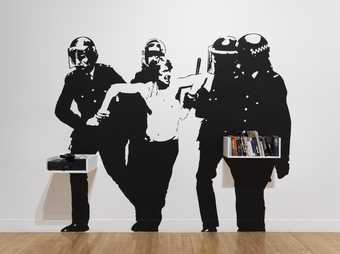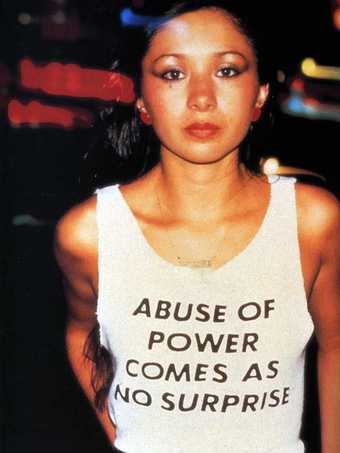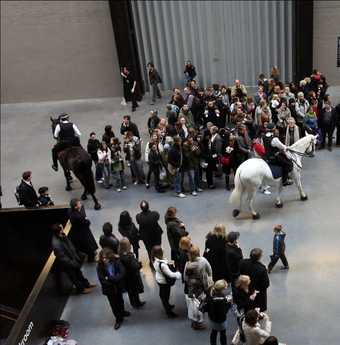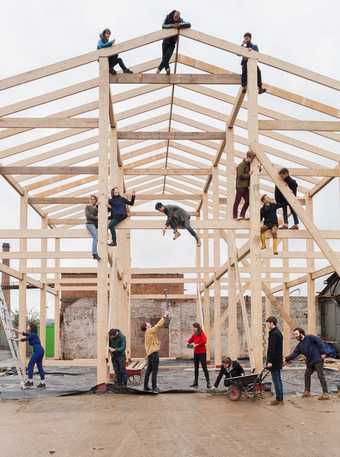Who is Judy Watson?
Judy Watson was born in 1959 in Munduberra, Queensland, Australia and lives and works in Brisbane.
The artist uses printmaking, drawing, painting and installation to explore themes relating to her Aboriginal heritage.
Watson’s matrilineal family is from Waanyi country in Northwest Queensland and her work is inspired by traditional Waanyi culture.
Archives and histories
As soon as you start channelling who you are into your artwork, you will have more inner strength and be able to deal with adversity.
Judy Watson
Judy Watson uses archival documents and photographs in her art.
She uses the extensive documentation of Aboriginal people in Australia as a resource, but describes discovering how her ancestors were treated as a ‘heavy burden'.
For her artwork a preponderance of aboriginal blood 2005, Watson used documents from the Archive of Queensland State, where her family are from.
The documents reveal how Aboriginal Australians were discriminated against over their voting rights until the 1960s. Before 1965 their right to vote depended on whether a person was a ‘full-blood Aborigine’ (and therefore not entitled to vote) or a ‘half-caste’ (entitled to vote).
Her copies of these archive documents are layered with blood-like pools of red paint, symbolising the pain and deaths of Aboriginal people.
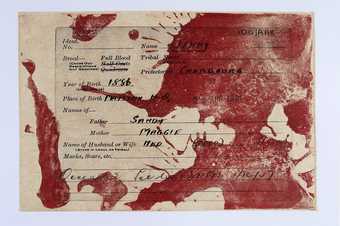
Judy Watson
a preponderance of aboriginal blood 2005
Collection: Museum of Contemporary Art Australia and Tate, purchased jointly with funds provided by the Qantas Foundation, 2016
© Judy Watson
Techniques and materials
[Painting] is like going beyond the boundaries of what you can see, past the blinkers of restrictions into another space. And if I don't like it I'll wash it all off and start again.
Judy Watson
Judy Watson trained as a printmaker at art school.
Printmaking often involves using several processes, creating layers and transferring visual information across different surfaces. These techniques have inspired her approach to painting.
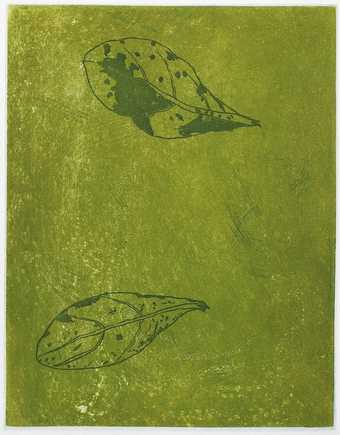
Judy Watson
heron island suite 6 2009/10
Collection: Museum of Contemporary Art Australia and Tate, purchased jointly with funds provided by the Qantas Foundation, 2016
© Judy Watson
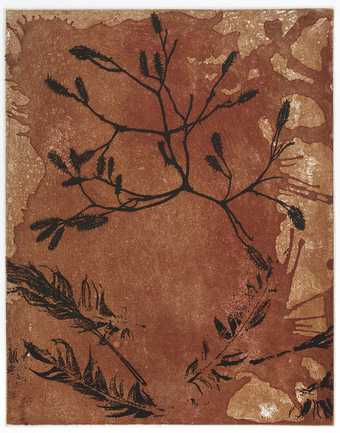
Judy Watson
heron island suite 8 2009/10
Collection: Museum of Contemporary Art Australia and Tate, purchased jointly with funds provided by the Qantas Foundation, 2016
© Judy Watson
By working on the floor, pouring paint and laying the canvas over textured objects and surfaces, Watson creates unexpected marks and patterns.
Watson also experiments with accidental effects by mixing together a wide range of varnishes, inks, pastels and dry pigments.
The artist further adds shells, clay or bark into the mix and even uses the weather! By leaving canvases outside, the elements (as well as dirt and insects) leave unexpected traces and stains on the cloth.
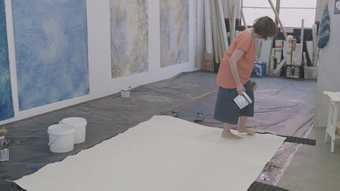
Judy Watson painting in her studio 2019
© Tate Digital
Collaboration and activism
I really like the idea of people working together. Your hands are busy doing something, you’re looking down you’re not looking at each other. Communication gets shared.
Judy Watson
Shared experience is an important part of Judy Watson’s working process.
The artist collaborates with family members to make some of her pieces. She also collaborates with other artists and with the wider Australian community.
Her on-going project the names of places 2016 is a collaboration with the public. The project aims to map all the places in Australia where horrific massacres of Aboriginal people took place.
Watson invites people to contribute their knowledge of where these massacres happened and adds these place names to a database and website that form part of the project. In this way the place names become part of the collective consciousness of the Australian people.
We have to make a stand … that’s what you can do as an artist: you can stand up, you can resist, and you can use art as a platform to discuss ideas.
Judy Watson
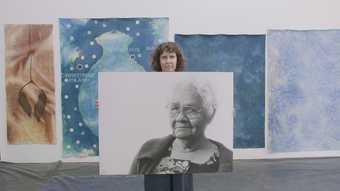
Judy Watson in her studio 2019 © Tate Digital
Tate, The Museum of Contemporary Art Australia (MCA) and Qantas are partners in an International Joint Acquisition Programme for contemporary Australian art. Judy Watson a preponderance of aboriginal blood 2005 was purchased jointly by Tate and the Museum of Contemporary Art Australia with fund provided by the Qantas Foundation, 2016.

